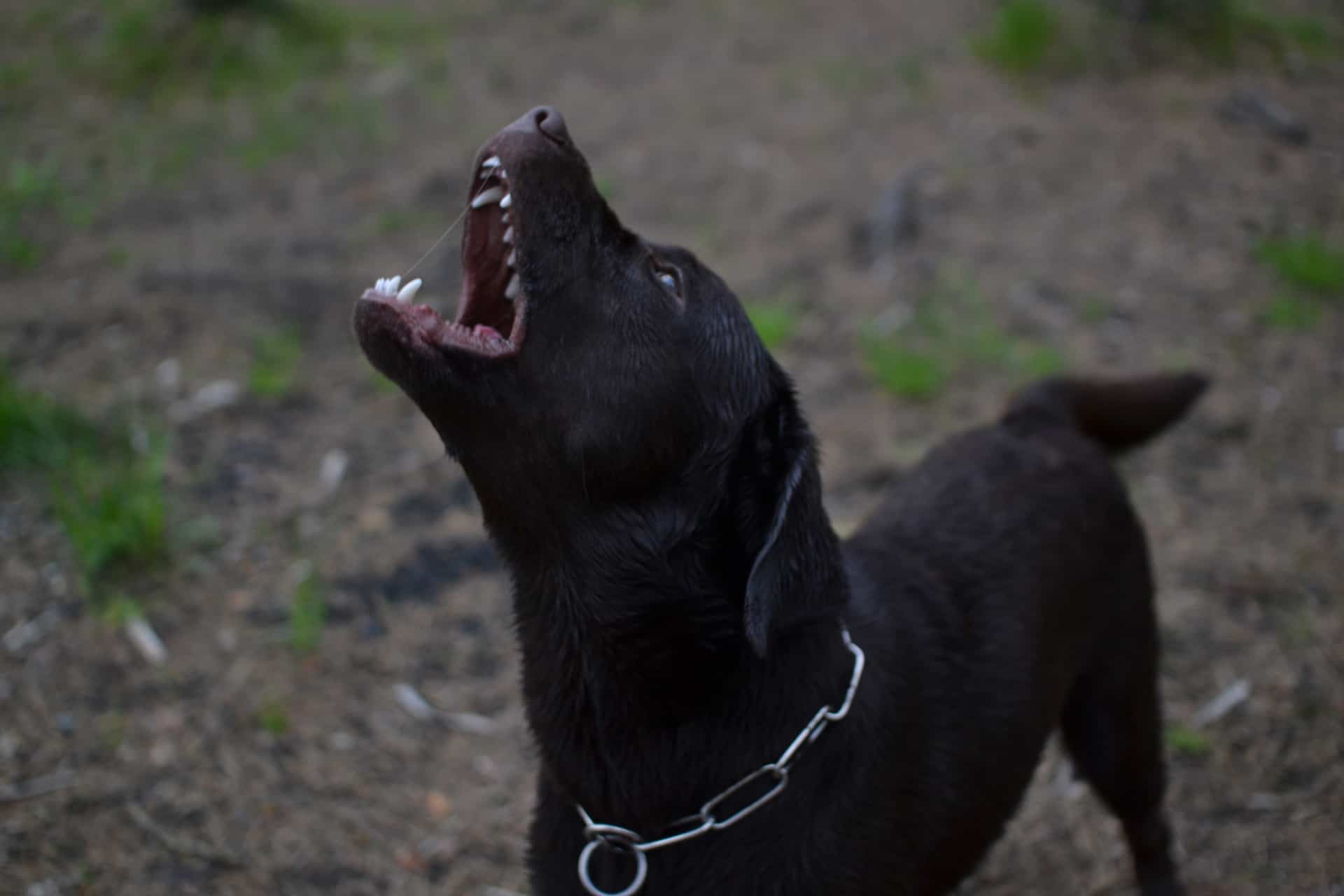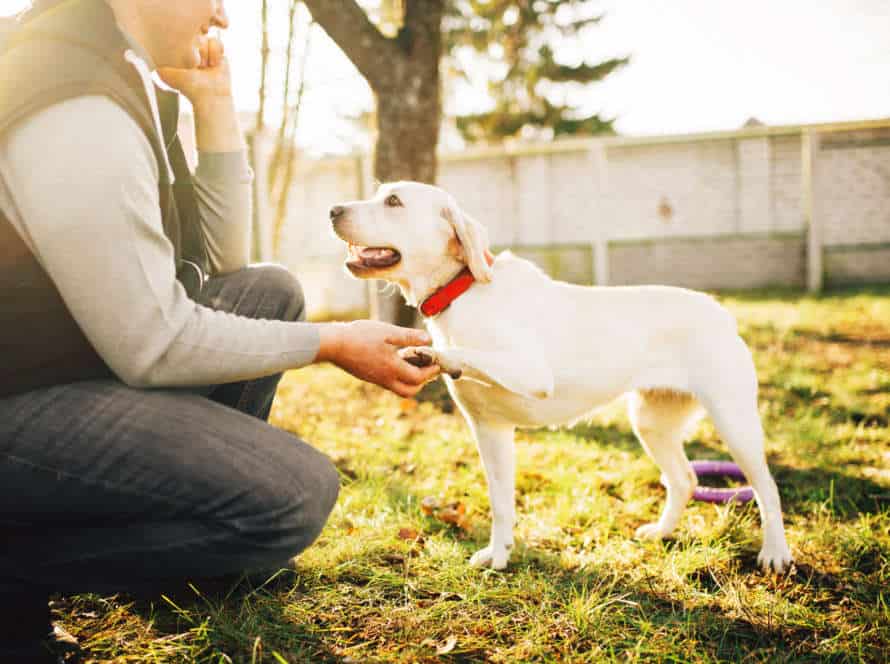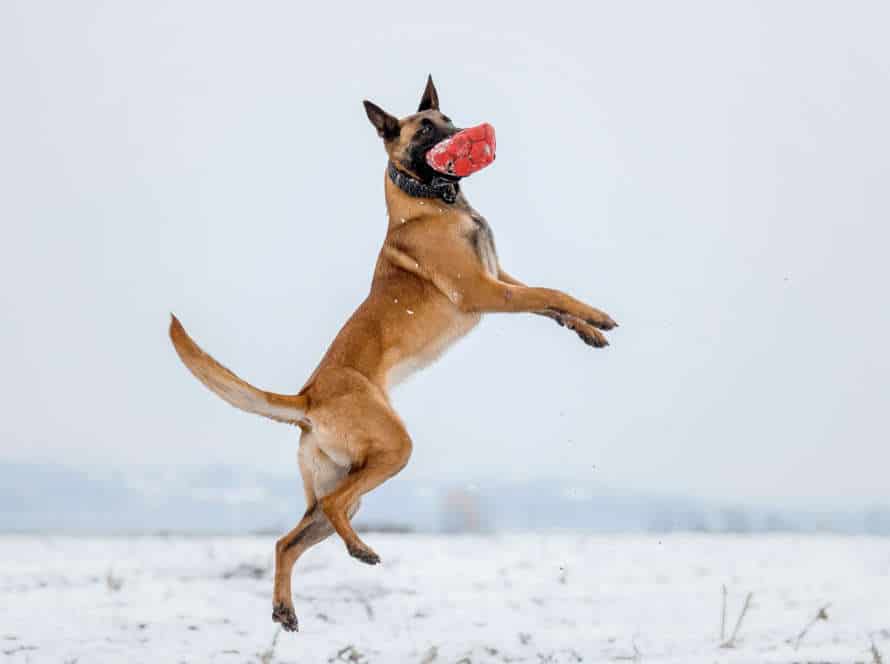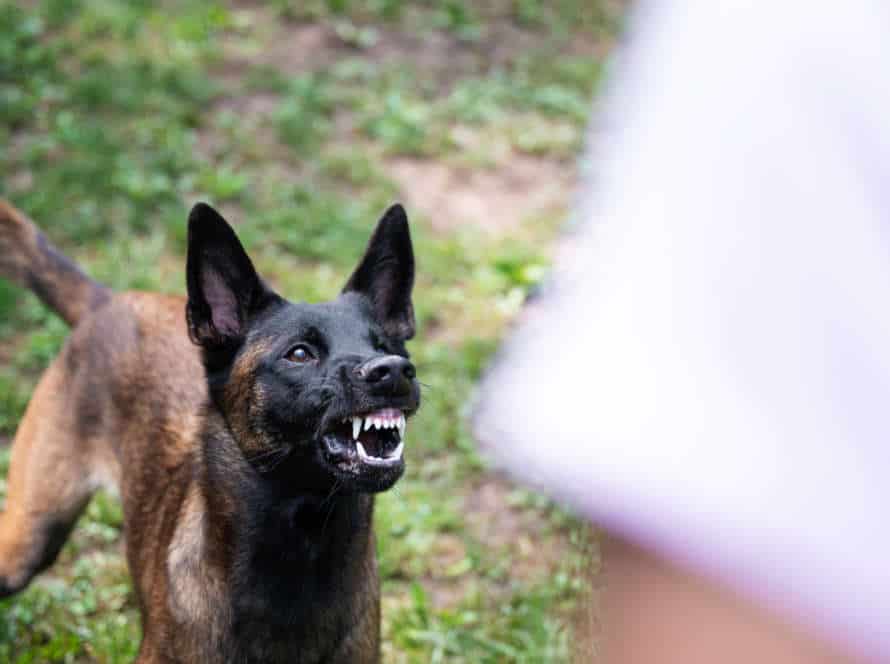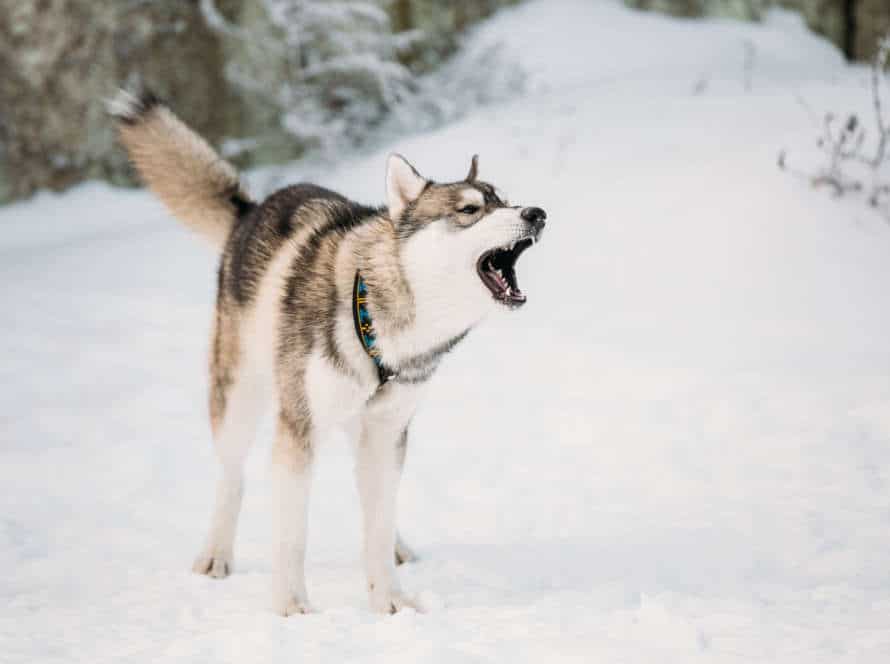What is Territorial Aggression in Dogs?
Territorial aggression is a type of aggressive behavior in dogs. It happens when they feel their territory is threatened. This can lead to serious and dangerous confrontations. So, it should not be taken lightly.
What causes it? How can we prevent it? We’ll discuss this in the article.
Understanding Dog’s Survival Instinct
Dogs have a natural instinct to survive. This includes territorial aggression – when they sense a threat. It could be towards humans or other animals. This is how they protect their resources and ensure their survival.
Signs of territorial aggression in dogs are barking, growling, lunging, biting and attacking. To avoid this, socialize them with humans and other animals early on. Also, give them plenty of exercise and training. Manage their environment to prevent triggers.
Causes of Territorial Aggression
Territorial aggression in dogs is a common defensive response when people or animals approach their space. There are several reasons why it happens: fear and insecurity, lack of socialization, genetics, overprotectiveness and learned behavior.
It’s essential to recognize and tackle the causes of territorial aggression in dogs in order to guarantee the safety of all parties.
Different Types of Territorial Aggression
Territorial aggression is a frequent behavior in dogs when they think their territory or home is in danger from outsiders. There are various kinds of territorial aggression that canines display, and being familiar with them is key to resolving the issue.
These are the three types of territorial aggression to watch out for:
- Overprotective Aggression: When a pup is too protective of its human/animal family in their territory or home.
- Possessive Aggression: This means a dog is fiercely shielding its toys, food, or other belongings from other animals/humans.
- Territorial Fear/Avoidant Aggression: When an unfamiliar person/animal comes near their territory, the dog acts aggressively to keep them away.
It’s important to keep in mind that territorial aggression can be perilous and it’s best to have a professional trainer or behaviorist help you manage it, particularly if it is severe.
Recognizing Territorial Aggression in Dogs
Dogs may show territorial behavior when they feel the need to protect their space. It may be their home, yard, or even a specific spot inside their home. Territorial aggression can be tricky to recognize. But, there are signs that can help us recognize it. Understanding these signs is the first step to safely managing this type of aggression.
Identifying Signs of Territorial Aggression
Signs of Territorial Aggression in Dogs:
- Growling, barking, snarling when someone approaches their area.
- Lunging, snapping, or biting if someone gets too close.
- Marking territory with pee or poo.
- Standing guard and not moving away.
- In extreme cases, attacking those who enter.
If you spot these signs in your pup, get help from a qualified trainer or behaviorist. Training and management can control aggression and your dog can live a happy life.
Differentiating Territorial Aggression from Other Forms of Aggression
Territorial aggression is an action that many dogs take. It is triggered by the need to safeguard their space. It’s important to tell it apart from other forms of aggression, to be able to solve it.
Here are some signs of territorial aggression:
- Growling, barking or lunging at strangers or other animals when they get close to the dog’s territory – like its home or garden.
- Being protective about its possessions, food and personal space.
- Aggressive behavior when it’s kept away from its territory.
This type of aggression may seem harmless at first. But, it can get out of hand and become risky. So, it’s best to take care of it before it gets too far.
Pro tip: Ask a canine expert to help diagnose and manage aggressive behavior.
Detecting Situations that could Trigger Territorial Aggression
Dogs may show territorial aggression, which can be dangerous. To prevent bad behaviour, it’s important to recognise situations that could trigger it. Watch out for:
- Growling, barking, or lunging at strangers or unfamiliar animals.
- Showing possessiveness over food, toys and other resources.
- Guarding their bed, crate, or other personal space.
- Being overly protective of their owner or a certain family member.
- Being triggered by doorbells or sirens.
Recognising these signs and getting help from a professional trainer can help manage or reduce this aggression before it gets out of hand.
Preventing Territorial Aggression in Dogs
Territorial aggression in dogs is no joke! It can be quite dangerous, sometimes leading to injury or even death. So, be mindful and take steps to nip it in the bud. In this article, we will discuss the root cause of this kind of aggression and give you helpful tips to manage it.
Socializing Your Dog
Socializing your pup can prevent territorial aggression, which is common for pooches who wish to guard their space from foreign individuals or other animals. It’s essential to train your dog on how to act in different social situations to avoid this problem.
- First, help your dog get used to different folks and creatures and places regularly.
- Second, watch your pup while they socialize and reward them for good conduct.
- Third, educate your pup on orders like “sit,” “stay,” and “leave it” to have more control in social scenarios.
- Fourth, little by little introduce your dog to new environments and things to dodge overwhelming them.
- Fifth, get your pup desensitized to triggers that may spark territorial aggression and seek help from an expert if necessary.
By socializing your pup from a young age, you can avoid territorial aggression and undesirable behavior, forming a considerate and content companion for many years! Pro tip: Being consistent is paramount! Practice socializing your pup continuously and give compliments for good behavior.
Ensuring Adequate Exercise and Playtime
Territorial aggression in dogs is a common concern that can cause serious harm. Exercise and playtime can help to prevent it. Here are some ideas to try:
- Develop a regular exercise plan. Walks, runs, toys, and games like fetch are all good for physical activity.
- Socialize your pup. Introduce them to people, pets, and different places.
- Set boundaries. Teach your dog that guarding objects and spaces from others is not okay.
- Seek help if needed. If the aggression is persistent and affecting their life, get a professional’s help.
Remember, with plenty of exercise and affection, your pooch will be happy and less aggressive, making them a great family member!
Training your Dog to Obey Basic Commands
Training your pooch to follow basic instructions is key for improved communication and to prevent bad behavior like territorial aggression which can be a danger to others.
Here are some commands you can teach your pup:
- “Sit”: Hold a treat close to their nose and move your hand up, making their head follow it and causing them to sit. Once in that position, say “sit”, then give the reward.
- “Stay”: Ask them to sit, wave your hand to tell them to stop, take a step away, and say “stay”. If they remain in place, reward them.
- “Come”: Say “come” while lightly tugging their leash towards you. When they respond, give them the treat.
- “Leave it”: Put a treat in one hand and close your fist around it, say “leave it”, and wait until they lose interest. Give them another treat from your other hand as a reward.
By teaching these commands to your dog, they’ll understand their role better, build trust and confidence, and avoid aggressive behavior.
Pro Tip: Always use treats and positive reinforcement to encourage good behavior.
Training Techniques to Manage Territorial Aggression
Territorial aggression is a common issue with dogs. Knowing why it happens and doing something to manage it can help you and your pet live together peacefully. Let’s take a look at the different training techniques that can be used to manage it.
Positive Reinforcement Training
Positive reinforcement training is a great way to manage territorial aggression in dogs. This includes rewarding good behavior.
Here are some tips:
- Identify triggers. What does your dog see as a threat?
- Train basic commands. Teach them “sit,” “stay,” and “come.”
- Reward good behavior. Give treats, toys, or verbal praise.
- Avoid punishment. Don’t punish them for being territorial – it could make them more aggressive or scared.
Pro Tip: Get advice from a certified trainer or vet, to create a program that works for you and your dog.
Counter Conditioning
Counter conditioning is a training technique used to manage territorial aggression in dogs. When they feel their space is being invaded, they can show aggression towards other dogs or people. This technique helps change their emotional response to a stimulus.
To use it, here are the steps:
- Identify the triggers that cause your dog’s territorial aggression.
- Set up a plan to slowly expose them to the trigger and reward them with treats or attention.
- Gradually increase the intensity of exposure and reward correct behavior.
- Eventually, your dog will link the trigger to positive emotions and won’t need to defend their space aggressively.
This training can help create a better environment for both you and your pup!
Desensitization
Desensitization is a useful training technique. It helps manage territorial aggression in dogs.
How? By exposing them to triggers that make them react.
First, identify the trigger that causes aggression. It could be strangers or animals.
Start by exposing the dog to the trigger from a distance. If they stay calm, reward them.
Gradually decrease the distance between the dog and the trigger. Keep rewarding them for calm behavior.
Do this until the dog can be near the trigger without reacting aggressively.
Remember: desensitization takes time, patience, and consistency. With consistent training and positive reinforcement, the dog will feel more comfortable.
Seeking Professional Help for Territorial Aggression
Dog owners often face territorial aggression from their pet. This is when the dog acts aggressively when their space is disturbed. To tackle this, seek the help of a professional. This is even more important if the aggression is severe or has become a habit. A professional can help you understand the reasons for the behavior and create an appropriate plan to address it.
Consultation with a Professional Dog Trainer
Managing a dog’s territorial aggression can be tricky. It is a good idea to get help from a pro dog trainer.
A consultation with a pro entails an in-depth look into the pet’s history, behavior, and living environment. This helps the trainer create a plan tailored to the dog’s aggression.
The plan could include techniques like positive reinforcement, desensitization, and counter-conditioning to teach the dog the right behaviors to handle different situations. The trainer may also give advice about creating a safe and comfortable home for the pup.
Remember, territorial aggression is serious! Only hire a certified and experienced dog trainer.
Referral to a Certified Applied Animal Behaviorist
Territorial aggression is common in pets, especially in dogs. If you spot signs of this behavior, get help from a Certified Applied Animal Behaviorist. They have the knowledge to understand and solve animal behavior.
Signs of territorial aggression:
- Growling or barking at visitors.
- Biting or snapping at people who enter their space.
- Defending their stuff from others.
The Behaviorist can identify the triggers and use positive reinforcement techniques and medication (if needed) to change the behavior. Early intervention is important to stop the aggression.
Medical Evaluation to rule out any potential causes of Aggression
If your pet is acting aggressively, professional help is a must. Start by making an appointment with your vet for a medical evaluation. This should include: a physical exam, blood tests, and an overview of past medical history.
Certain illnesses or injuries, like brain tumors, thyroid issues or dental problems, can trigger aggression. Once any medical causes are ruled out, consult a certified animal behaviorist or pro dog trainer.
Take action straight away to ensure the safety of your pet, you, and others around you.
Pro tip: Early intervention is key to treating aggression. Consulting with a certified animal behaviorist increases the chances of successful treatment.
Frequently Asked Questions
Q: What is territorial aggression?
A: Territorial aggression is a behavior in animals, including humans, where they defend their space from intruders or perceived threats.
Q: What causes territorial aggression in dogs?
A: Territorial aggression in dogs can have several causes, including genetics, inadequate socialization or training, fear or anxiety, and a perceived threat to their space or family.
Q: How can I prevent my dog from exhibiting territorial aggression?
A: Prevention of territorial aggression in dogs involves proper socialization, positive training techniques to reinforce good behavior, and reducing the possibility of perceived threats to their space.
Q: What are the signs of territorial aggression in cats?
A: Signs of territorial aggression in cats may include hissing, swatting, biting, or growling when approached by another animal or human in their space.
Q: How can I help my cat overcome territorial aggression?
A: Helping a cat overcome territorial aggression involves providing plenty of hiding places, separating rival cats, providing multiple litter boxes, and considering the use of pheromone products or medication prescribed by a veterinarian.

